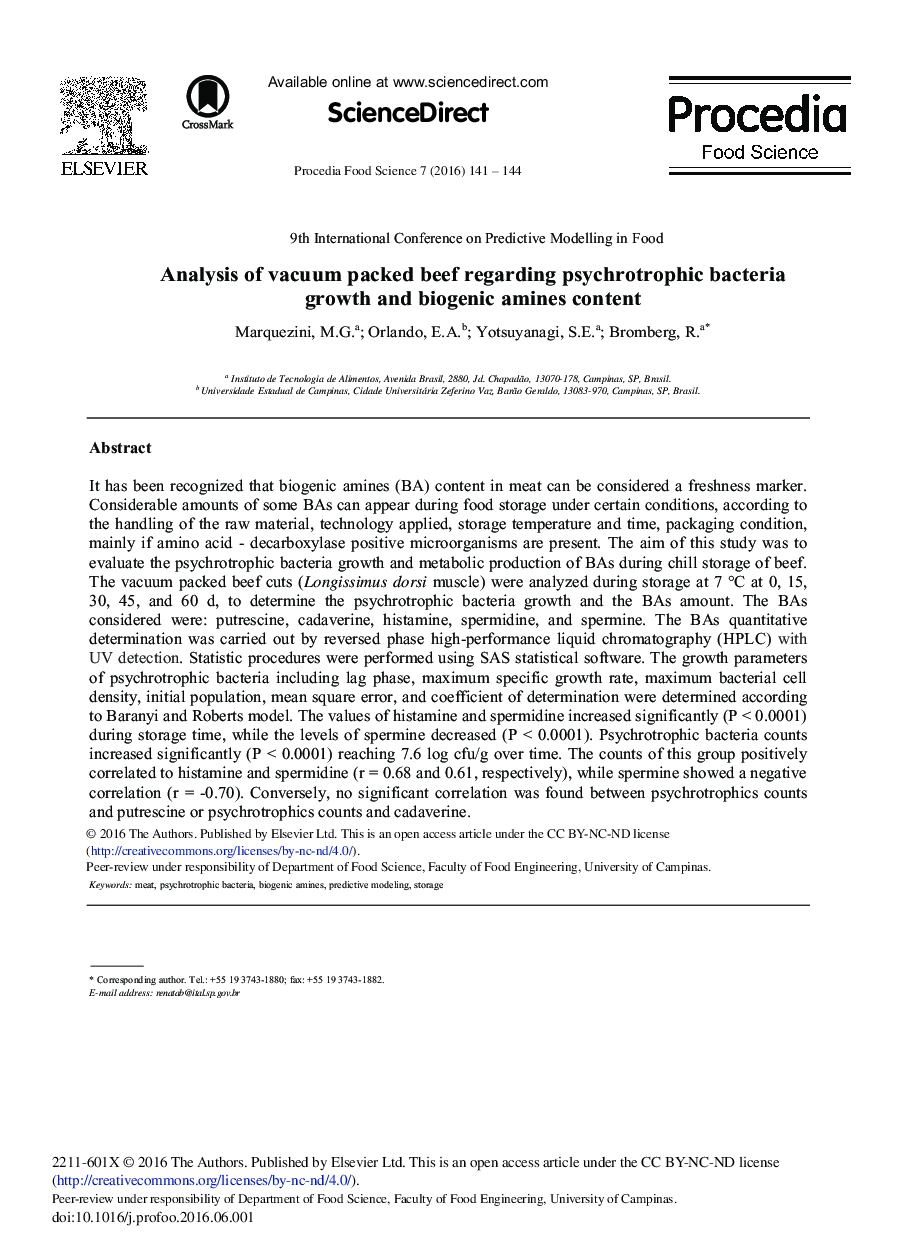| Article ID | Journal | Published Year | Pages | File Type |
|---|---|---|---|---|
| 1266070 | Procedia Food Science | 2016 | 4 Pages |
It has been recognized that biogenic amines (BA) content in meat can be considered a freshness marker. Considerable amounts of some BAs can appear during food storage under certain conditions, according to the handling of the raw material, technology applied, storage temperature and time, packaging condition, mainly if amino acid - decarboxylase positive microorganisms are present. The aim of this study was to evaluate the psychrotrophic bacteria growth and metabolic production of BAs during chill storage of beef. The vacuum packed beef cuts (Longissimus dorsi muscle) were analyzed during storage at 7 °C at 0, 15, 30, 45, and 60 d, to determine the psychrotrophic bacteria growth and the BAs amount. The BAs considered were: putrescine, cadaverine, histamine, spermidine, and spermine. The BAs quantitative determination was carried out by reversed phase high-performance liquid chromatography (HPLC) with UV detection. Statistic procedures were performed using SAS statistical software. The growth parameters of psychrotrophic bacteria including lag phase, maximum specific growth rate, maximum bacterial cell density, initial population, mean square error, and coefficient of determination were determined according to Baranyi and Roberts model. The values of histamine and spermidine increased significantly (P < 0.0001) during storage time, while the levels of spermine decreased (P < 0.0001). Psychrotrophic bacteria counts increased significantly (P < 0.0001) reaching 7.6 log cfu/g over time. The counts of this group positively correlated to histamine and spermidine (r = 0.68 and 0.61, respectively), while spermine showed a negative correlation (r = -0.70). Conversely, no significant correlation was found between psychrotrophics counts and putrescine or psychrotrophics counts and cadaverine.
